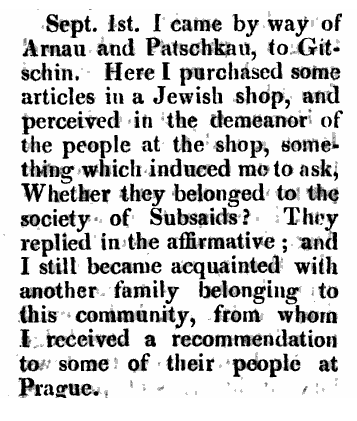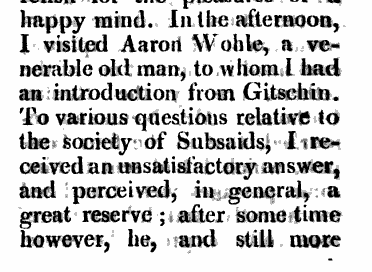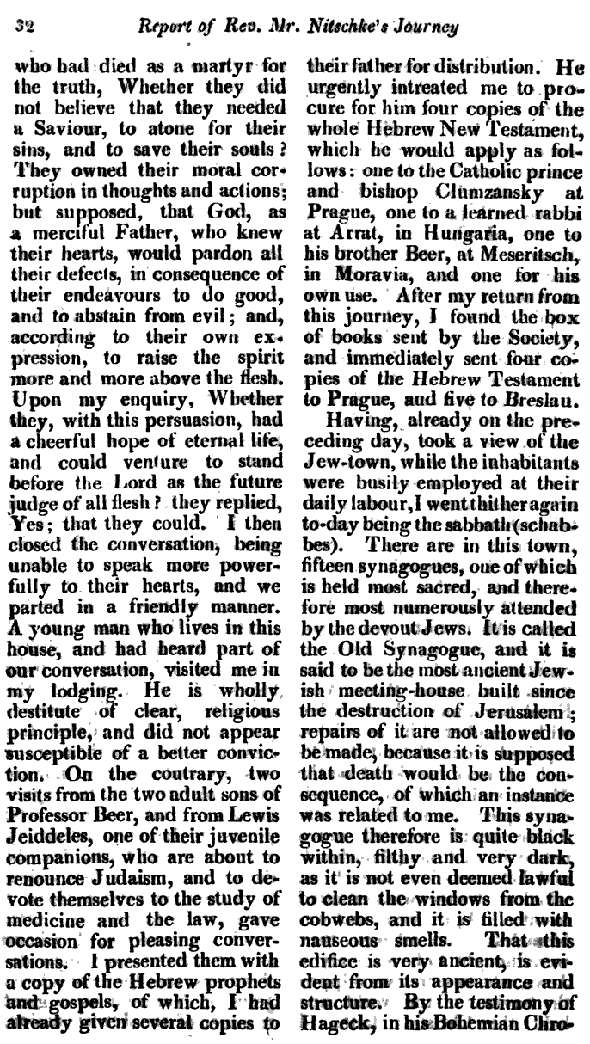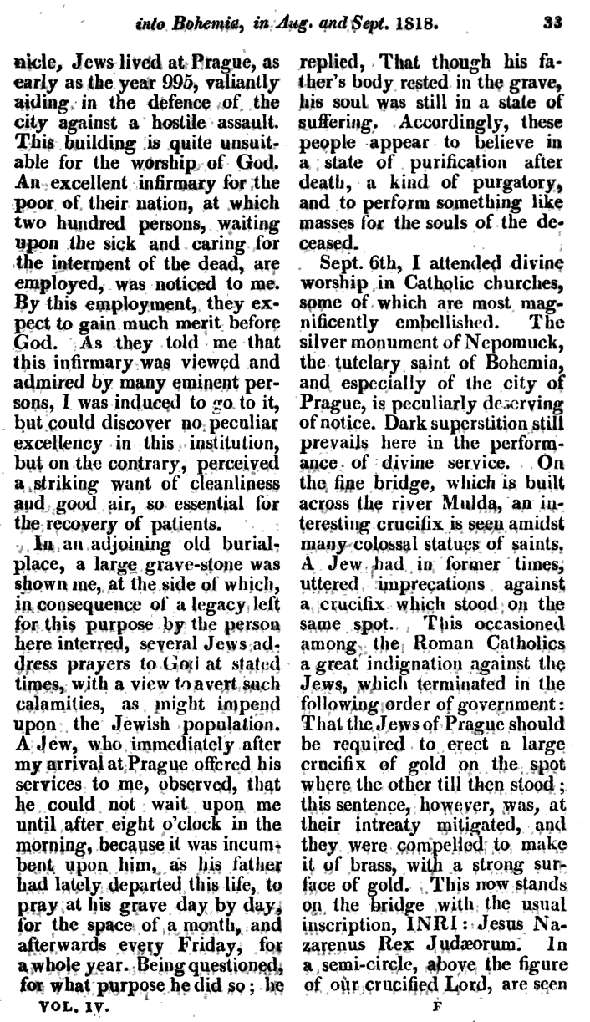Once such article published in 1812, called the State of Mind of the Jews quotes a letter from a "Brother Niety, a merchant in Riga," dated May 5, 1811.

This Niety - identified elsewhere by the name of Gustavus Nietz - wrote that the autumn before his son traveled through Odessa (which is a great port city). There he learned that many Jewish families had been passing through. A German Jew explained to him that they were en route to emigrate to Palestine. When asked what their motivation was, he was told that on the one hand economic stagnation and poverty is probably impelling many of them, but overall they are driven by Messianic fervor. Their journey was funded by a collection of money from wealthy Jews. They believe that the Messiah would arrive in about 8 years. The same man told him that in 15 years there probably won't be any Jews left in the country!
Thinking these are "signs of the times," writes Brother Niety, he then sought to confirm these assertions. From two separate sources (Jewish leaders of two towns) he learned that over the previous two years one hundred Jewish families had indeed emigrated to Palestine because of Messianic expectations. Niety pointed out that they might be mistaken. In reply he was told that it didn't matter, for even if they do not live to see the coming of the Messiah, they will be buried in the Holy Land and thus in the best position to rise from their graves and greet the Messiah when he does come. Niety was told that most of these people were from Brody and Vilna.
Next, Niety relates some things he heard about Sabbatians, and conjectures - incorrectly - that these people belonged to that sect:

In 1818 a missionary named J.F. Nitschke - described elsewhere as a Moravian minister - I would have liked to have said that he is the aforementioned Niety/ Nietz, but they appear to be two different individuals - wrote a report concerning his travels in Bohemia in August and September of the same year. As you can see, he had Sabbatians on his mind:

He calls them Subsaids (read: Shabbsaites).
Writing that he made contact with some, and was given a reference to meet with Sabbatians in Prague. This he did, meeting with "Aaron Wohle," who was in fact a Sabbatian leader, but he didn't want to tell him much:

Aaron Wohle was Aaron Beer Wehle (1750-1825), a Sabbatian leader, and the brother of a more famous Frankist leader named Jonas Beer Wehle. It is with some irony that he was descended from and named for a rabbi - another Aaron Beer Wehle - who was one of the signers of the Prague cherem against Sabbatians in 1725, alongside R. Yonasan Eybeschutz who was then under a cloud of suspicion over the authorship of the document Ve-avo Hayom el ha-Ayin. Also of interest is that Zacharias Frankel's aunt Esther was married to this Aaron Wehle. See here. People interested in American Jewish, or legal, history will also find it notable that Wehle also happens to have been the grandfather of Fredericka Dembitz, who was Louis Brandeis's grandmother.
Just to give an indication of what a small world the 18th century's Jewish elite occupied, although the brothers Jonas and Aaron were Sabbatian, their brother Ephraim would seem not to have been one despite being named by R. Yaakov Emden. His son Yom Tov married the Noda Beyehuda's daughter![1]
Just to give an indication of what a small world the 18th century's Jewish elite occupied, although the brothers Jonas and Aaron were Sabbatian, their brother Ephraim would seem not to have been one despite being named by R. Yaakov Emden. His son Yom Tov married the Noda Beyehuda's daughter![1]



[1] On this particular connection, see Alexander Putik's "The Prague Sojourn of Rabbi Jacob Emden as Depicted in his Autobiography Megillat Sefer" in Judaica Bohemiae 42 (2006).
From Tzelach Ha-shalem Vol. 2 Pesachim 5b, Noda Beyehuda quotes Ephraim Wehle, his daughter's father-in-law:

Just to throw it out there: the notion that Ephraim Wehle must not have been Sabbatian, despite the way Sabbatianism seems to have been a family affair in 18th century Prague, is based on Alexander Putik's article. Putik reasons that since the Noda Beyehuda was stridently opposed to Sabbatians, then Ephraim must not have been one. However he was named by R. Yaakov Emden as one along with his brothers. Therefore it is at least possible that he had been one in his youth. Considering the family he married into, his son Yom Tov must not have been one.
That said, Putik also explains that the Prague Sabbatians were somewhat different from the Polish ones in that they were outwardly entirely respectable. People know, or suspected, who they were by rumor, but nothing in their behavior gave any indication of their private beliefs. Many of them - such as the Wehle family in general - were community leaders, and they were basically left alone unaccused. This changed around the turn of the century when R. Elazar Fleckeles, the Noda Beyehuda's successor as Av Beth Din, delivered several sermons against them (see here). These sermons led to riots, and from that point on the issue of Sabbatianism was an open one in the community. Also, as indicated here, by the early 19th century the Sabbatians were no longer outwardly observant; why would they be? Observance was weakening in the community in general. They had also become involved with the Frankist sect, with Jonas Wehle in particular having much to do with Frank's daughter Eva.
When I discovered the reference to the "Subsaids" in Prague I was excited, but then I learned that I was about 65 years too late for it to be my original discovery. Gershom Scholem already wrote about it in this article A Sabbatian Will from New York. Since the Dembitz-Brandeis family were prominent American Reform Jews, there Sabbatian origin was one more plank in his thesis that Reform Judaism was an outgrowth of Sabbatian antinomianism, something of which I am not quite convinced.

No comments:
Post a Comment